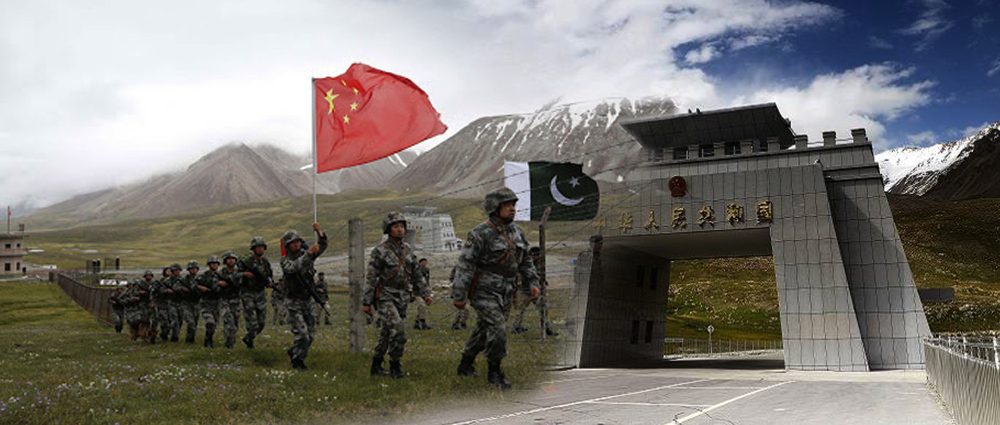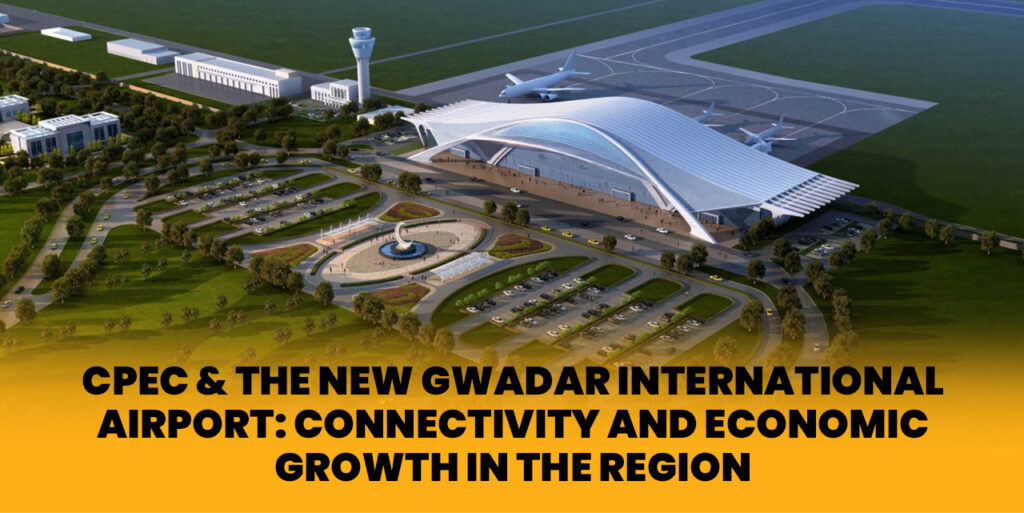The China-Pakistan Economic Corridor (CPEC) is a game-changing project that aims to boost economic growth, trade, and infrastructure in Pakistan. One of the major developments under CPEC is the construction of the New Gwadar International Airport (NGIA), which is expected to enhance connectivity and contribute to regional economic prosperity.
What is CPEC?
CPEC, short for China-Pakistan Economic Corridor, is a multi-billion-dollar initiative launched in 2013 as part of China’s Belt and Road Initiative (BRI). It is a network of roads, railways, and energy projects that connect Gwadar Port in Pakistan to China’s Xinjiang region. The route of CPEC spans approximately 3,000 kilometers, covering key areas such as Gilgit-Baltistan, Punjab, Sindh, and Balochistan.
What is CPEC and its Importance?
CPEC holds immense significance for both Pakistan and China, serving as a vital economic and strategic partnership between the two nations. One of its primary objectives is to improve trade routes, allowing China to access global markets more efficiently through Gwadar Port. By reducing reliance on traditional, longer maritime trade routes, CPEC significantly shortens transit times and lowers transportation costs, making it a game-changer for regional trade.
Another key benefit of CPEC is its role in strengthening Pakistan’s infrastructure. The project includes the construction of modern highways, rail networks, and energy facilities, which are crucial for the country’s economic development. Pakistan has long struggled with energy shortages and outdated transport networks, but CPEC investments have helped mitigate these issues by introducing new power plants and upgrading roads and railway systems.

Beyond infrastructure, CPEC promotes regional economic cooperation and connectivity. It links Pakistan with China, Central Asia, and the Middle East, positioning the country as a central hub for trade and commerce. This improved connectivity encourages foreign direct investment, opens up new business opportunities, and integrates Pakistan more deeply into the global economy.
The economic benefits of CPEC extend further by generating employment opportunities. The development of industries, special economic zones, and infrastructure projects has created thousands of jobs across Pakistan. Additionally, the improved business environment encourages entrepreneurship and attracts multinational companies looking to expand in the region. As a result, CPEC contributes to Pakistan’s GDP growth, enhancing overall economic stability and prosperity.
The Role of Gwadar in CPEC
Gwadar, a strategic deep-sea port city in Balochistan, is the focal point of the CPEC project. It provides China with the shortest route to the Arabian Sea, reducing its dependence on long maritime routes. The main purpose of CPEC is to facilitate smooth trade flow between China, Pakistan, and beyond. The development of Gwadar Port and the construction of the New Gwadar International Airport are crucial steps toward making the city a global trade hub.
New Gwadar International Airport: A Game-Changer
The New Gwadar International Airport (NGIA) is being developed with financial assistance from China, under the CPEC framework. Expected to be Pakistan’s second-largest airport, NGIA will be capable of handling large aircraft like the Airbus A380. The project aims to transform Gwadar into a modern city with world-class transport facilities, which include:
Modern Runways
The airport will be equipped with advanced runways designed to handle heavy cargo planes and passenger flights efficiently. It will accommodate large aircraft, ensuring smooth operations for both commercial airlines and freight carriers, and enhancing trade and tourism in the region.
A Way to Boost Tourism & Trade
With better air connectivity, the airport is expected to attract investors, business executives, and tourists. This will encourage trade-related activities, promote Gwadar as a prime travel destination, and support the hospitality industry by increasing the number of visitors to the city.

Improved Connectivity
The airport will provide seamless connections between Gwadar and major cities in Pakistan and abroad. It will facilitate quicker travel times, strengthen links between economic zones, and enhance international trade routes, making Gwadar a strategic hub for regional and global commerce.
What is the Impact of CPEC on Pakistan’s Economy?
The impact of CPEC on Pakistan’s economy has been significant. It has:
Strengthened Infrastructure and Industrial Growth
CPEC has led to the development of modern transportation networks, including highways, railways, and energy projects. These developments have facilitated industrial expansion, improved logistics, and created a more efficient trade environment.
Created Employment Opportunities in Various Sectors
The construction of roads, power plants, and special economic zones has generated thousands of jobs. These employment opportunities span across multiple industries, from construction and engineering to retail and logistics, benefiting both skilled and unskilled workers.
Improved Energy Production, Reducing Power Shortages
Several power projects under CPEC, including coal, hydro, and solar plants, have been established to address Pakistan’s energy crisis. These projects have contributed to reducing electricity shortages, ensuring a more stable power supply for industries and households.
Increased Foreign Investment, particularly in Gwadar’s Development
As Gwadar emerges as a trade and logistics hub, it has attracted significant foreign investment. Companies from China and other countries are showing interest in setting up industries, businesses, and infrastructure projects in the region, boosting Pakistan’s economy further.
Conclusion
The CPEC project and the New Gwadar International Airport are pivotal to Pakistan’s economic growth and global trade connectivity. With improved infrastructure, enhanced regional trade, and better economic opportunities, CPEC is set to transform Gwadar into a world-class port city, benefiting both Pakistan and China. As these projects progress, they promise a brighter future for regional and international trade, making Pakistan a central player in global commerce.
CPEC is a highly secure project, protected by dedicated security forces that take extensive measures to maintain peace between China and Pakistan. Advanced facilities, surveillance systems, and strict protocols ensure the safety of all operations, reinforcing stability and protecting the corridor from any threats.
To know more about how these forces ensure that people remain safe, have a look at this Documentary Film by Rava Studios on the Hijacking of Flight 544, where they safeguarded hundreds of lives!


